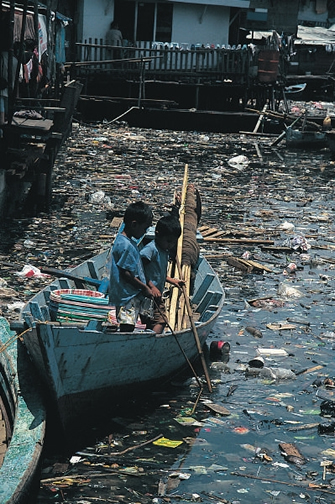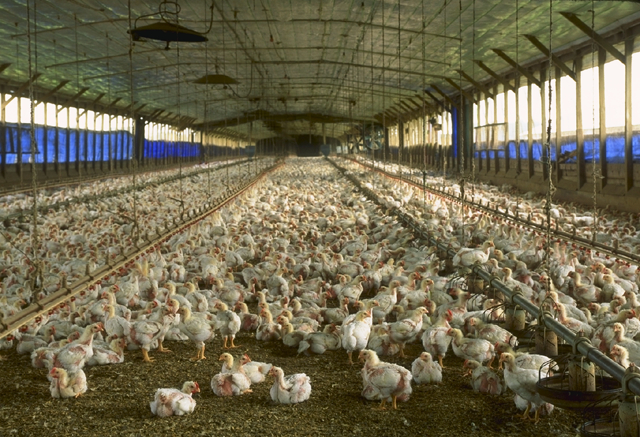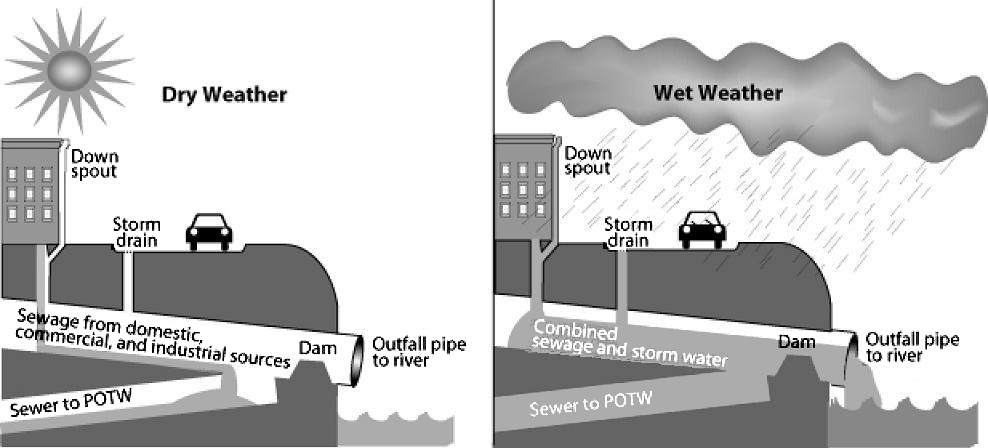| << Chapter < Page | Chapter >> Page > |


Pollutants enter water supplies from point sources, which are readily identifiable and relatively small locations, or nonpoint sources, which are large and more diffuse areas. Point sources of pollution include animal “factory” farms that raise a large number and high density of livestock such as cows, pigs, and chickens ( [link] ) and discharge pipes from a factories or sewage treatment plants. Combined sewer systems that have a single set of underground pipes to collect both sewage and storm water runoff from streets for wastewater treatment can be major point sources of pollutants. During heavy rain, storm water runoff may exceed sewer capacity, causing it to back up and spilling untreated sewage into surface waters ( [link] ). Nonpoint sources of pollution include agricultural fields, cities, and abandoned mines. Rainfall runs over the land and through the ground, picking up pollutants such as herbicides, pesticides, and fertilizer from agricultural fields and lawns; oil, antifreeze, car detergent, animal waste, and road salt from urban areas; and acid and toxic elements from abandoned mines. Then, this pollution is carried into surface water bodies and groundwater. Nonpoint source pollution, which is the leading cause of water pollution in the U.S., is usually much more difficult and expensive to control than point source pollution because of its low concentration, multiple sources, and much greater volume of water.


Oxygen-demanding waste is an extremely important pollutant to ecosystems. Most surface water in contact with the atmosphere has a small amount of dissolved oxygen, which is needed by aquatic organisms for cellular respiration. Bacteria decompose dead organic matter (chemically represented in a simplified way as CH 2 O) and remove dissolved oxygen (O 2 ) according to the following reaction:
Too much decaying organic matter in water is a pollutant because it removes oxygen from water, which can kill fish, shellfish, and aquatic insects. The amount of oxygen used by aerobic (in the presence of oxygen) bacterial decomposition of organic matter is called biochemical oxygen demand (BOD). The major source of dead organic matter in most natural waters is sewage; grass and leaves are smaller sources. An unpolluted water body with respect to oxygen is a turbulent river that flows through a natural forest. Turbulence continually brings water in contact with the atmosphere where the O 2 content is restored. The dissolved oxygen content in such a river ranges from 10 to 14 ppm O 2 , BOD is low, and clean-water fish, e.g., bass, trout, and perch dominate. A polluted water body with respect to oxygen is a stagnant deep lake in an urban setting with a combined sewer system. This system favors a high input of dead organic carbon from sewage overflows and limited chance for water circulation and contact with the atmosphere. In such a lake, the dissolved O 2 content is ≤5 ppm O 2 , BOD is high, and low O 2 -tolerant fish, e.g., carp and catfish dominate.

Notification Switch
Would you like to follow the 'Principles of biology' conversation and receive update notifications?